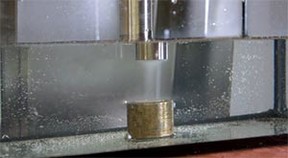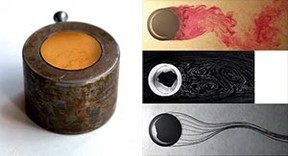Laboratory of hydrodynamics and cavitation
Main goals and activities of the laboratory
- Experimental research of cavitation in a flowing fluid.
- Cavitation bubble research.
- Cavitation research in hydraulic dampers and in the field of biomedical applications.
- Water quality assessment in inaccessible places.
- 2D visualization in external and internal hydrodynamics.
- Very accurate local measurements of the level and the frequency of its oscillation.
- Measurement of characteristics of water pumps and fittings.
Specific devices and outputs
- Ultrasonic Cavitation Generator - Investigation of cavitation resistance of materials.
- Acoustic bubble spectrometer - a unique device for determining the quality of water in inaccessible places (eg nuclear power plant pipelines) using the relationship between the amount of bubbles in the volume of the fluid and the properties of the fluid.
- Hydrodynamic bath - for 2D visualizations in external and internal hydrodynamics.
- Water level sensor and frequency of its oscillation - point measurements.
- Hydrodynamic track for measuring the characteristics of water pumps and fittings.
Professional focus of the laboratory
The cavitation laboratory is focused on research of the behavior of individual cavitation bubbles, as well as research of the cavitation resistance of various types of materials. An ultrasonic generator is used for cavitation erosion research, which accelerates real cavitation resistance tests performed on a cavitation tunnel. Cavitation erosion first strengthens the surface and then cavitation wear. Cavitation is a physical phenomenon that is related to the origin, extinction and activities of macroscopic cavities in a liquid, which we call cavitation bubbles. Cavitation is known mainly due to cavitation erosion, which causes damage to turbines, pumps and other hydrodynamic machines. When cavitation bubbles collapse, high pressures and temperatures are created, which can lead to plasma production. In the hydrodynamics laboratory, experiments are performed in which the 2D flow of water is made visible. Based on the hydrodynamic analogy between the flow of a thin layer of water and the two-dimensional flow of gas, flows of compressible and incompressible fluids can be simulated. The tool for experiments is an analog device - escaping a model table of own design and production. Visualization can be performed by several methods, the most common of which is the method of applying dust particles to the surface of colored water. In addition to flow visualization, very accurate local measurements of level height and vibration frequency can also be performed.

 Česky
Česky



